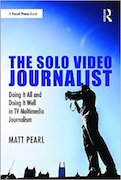I was 23. I was unemployed. And I feared Maury Povich.
Those are my excuses for one of my first failures in journalism.
I had left my first TV news job without a new one. I U-Hauled home from Sioux City, Iowa and sought freelance gigs while living with my parents. I found a taker – New Jersey State Golf Association Magazine – and an assignment: walk one round with Povich, the talk show host with a 1.0 golf handicap. I arranged to meet at his home course: Hollywood Golf Club in Deal.
Deal hugs the Jersey Shore, but we never went there. “It’s very wealthy,” my mom said years later. “They don’t go to the same beach where we go.”
They don’t play the same golf courses either.
The fairways at Hollywood rolled like shire meadows. I kept searching for nicks and cuts. My divots would surely get me expelled.
Povich arrived. He towered over me. We spent hours together, and I’m sure I wrote a perfectly straightforward piece about his joy for golf.
But I didn’t write about what I remember today.
I didn’t write about his demeanor. Povich moved at half-speed. His back curved slightly. He seemed, like the course, a fragile beauty under a tightrope of elements. He walked old.
I didn’t write about context. Povich said his interest in golf skyrocketed when his wife, ABC news anchor Connie Chung, arranged lessons with a pro, CBS golf analyst Peter Kostis. When he told me this story, his voice didn’t rise or inflect. He didn’t cut the celebrity name-drops with a self-deprecating joke. He presented it as a natural occurrence of living in a different space than most of his fans.
I told the Kostis story in my piece. I didn’t tell the layers.
I didn’t write about my one tough question. Povich had, in recent years, embraced a more salacious format. Three years earlier, USA Today columnist Whitney Matheson declared him “miles farther down the commode than Jerry Springer and Jenny Jones.” (Matheson concluded her column with a poll about Celebrity Boxing, so perhaps we’re all down the commode.) Towards the end of our walk, I asked eyes-down about what he found most valuable about the show.
Povich tap-danced for a minute, then grumbled something like, “I’m really focused on these adopted children right now.”
I don’t remember what he specifically mentioned. I think it was adopted children. But I didn’t press further. I didn’t write about it. I didn’t write anything that anyone didn’t already know.
I didn’t feel I belonged.
I didn’t belong on the mossy fairways. I didn’t belong in Deal. I didn’t belong in Povich’s stratosphere. I made $19,000 a year in Iowa. He probably spent that on an hour with Kostis.
I didn’t believe in my role as a journalist. I didn’t believe in my voice. Maybe, at 23, I hadn’t developed it.
Twelve years later, George Plimpton’s The Bogey Man jogged my memory. The longtime sportswriter speaks about hitting the course with Sam Snead, failing to generate dialogue, and chirping afterwards, “Today was a waste. I certainly never got the sense of what it’s like to play against a championship golfer.”
Plimpton recognized right away. I recognize now.
The Solo Video Journalist is available for purchase. You can find it on Amazon, Barnes & Noble, and the publisher’s web site.
Matt Pearl is the author of the Telling the Story blog and podcast. Feel free to comment below or e-mail Matt at matt@tellingthestoryblog.com. You can also follow Matt on Facebook and Twitter.

